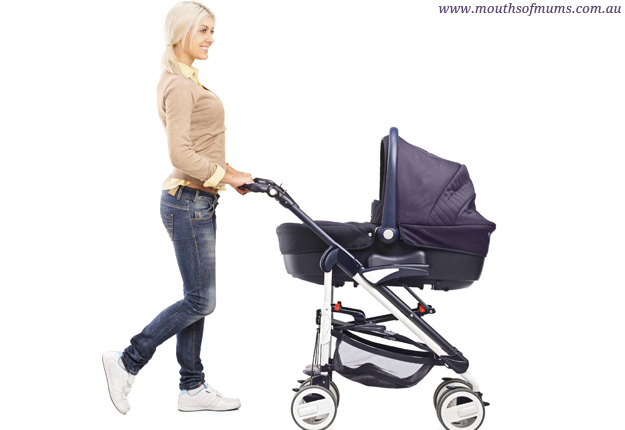Renowned Physiotherapist Jason T Smith shares his advice on buying and using a pram correctly….
If you’re already a parent you would certainly know that to assemble a new pram, a set of instructions is vital. As a physiotherapist, I believe prams should come with a set of ‘how to use’ instructions to avoid unnecessary pain or discomfort, even possible injuries.
As this isn’t the case, I’ve compiled a list of pointers to ensure you set up and use your pram the correct way.
These will be useful for all parents, no matter how little or often you use your pram.
Like a new car or bicycle, it’s a good idea to take a new pram for a test drive to ensure you’re buying the right product for your needs. Don’t forget to include your partner if he or she will be sharing pram pushing duties with you. If there’s a significant difference in the height of you and your partner, look for a pram that offers a number of adjustable features. Also consider the following:
- The height and how adjustable the handle is
- The height and placement of the seat in the pram
- The weight of the pram
- The requirements of the pram to fit in with your lifestyle
Following the purchase, set up your pram according to the instructions ensuring the height of the handle allows you to stand feet flat on the ground, not on your toes and that you’re not stooping over the pram to manoeuvre it. Ideally your forearms should be at a 45 degree angle when holding the handle.
Maintaining correct posture will be a great deal easier if you have bought the right pram and have set it up the right way for your needs.
Many people are becoming aware of correcting their static posture, – that is, their posture whist sitting or standing. However, most of us neglect to think about our posture when walking or running, known as dynamic posture.
Incorrect posture while using your pram can result in back and shoulder issues, especially during jogging or running. For this reason it is important to consciously think about your posture as you use your pram.
[insert image here]
When walking or running with your pram, you may notice that your body is inclined to tilt forward which can be taxing on your lower back, and your shoulders may slump forward too (ie woman on the left). To correct your posture, following these easy steps as the woman on the right has done:
- Stand tall and imagine you are a marionette hanging from a piece of string. Feel your chest open and your body slim.
- Keep your chin horizontal with the ground.
- Pinch your shoulder blades together without sticking your stomach out.
- Flatten your stomach by tightening your abdominals, and close the gap in your lower back.
Depending on how you’re using your pram the grip you will use could be either one or two hands to control and steer the pram. When walking with your pram, grip the handle with a firm yet comfortable grip with both hands. If you use one hand more than the other, for example holding a coffee in one hand and controlling the pram with the other, you’ll put the wrists and shoulders on that side of the body under stress. I recommend focussing on one activity at once, and so leave the coffee at the café.
Alternatively, if you’re jogging or running with your pram, use a one handed grip, alternating between hands as you move. When taking on a hill (incline or decline), its best that you use both hands to maintain control.
It might be obvious, but you will get more out of your pram exercise keeping the pram closer to your body. Use your whole body to move the pram rather than just relying on your arms as this can be quite inefficient for the body.
Adding a pram into the exercise equation may seem straight forward however the points I have outlined above are important to consider to ensure you do not encounter any unnecessary pain or injuries. A Back In Motion physiotherapist is a great advisor that you may wish to utilise when purchasing and first starting out with your new pram. Check out Back in Motion’s Facebook and Twitter pages for more information.





















11:55 pm
5:59 pm
5:44 am
8:54 am
7:07 pm
12:01 am
9:48 am
2:07 pm
7:41 pm
10:13 pm
2:28 pm
12:03 pm
2:14 pm
9:02 am
4:46 pm
- 1
- 2
- …
- 7
- »
Post a comment